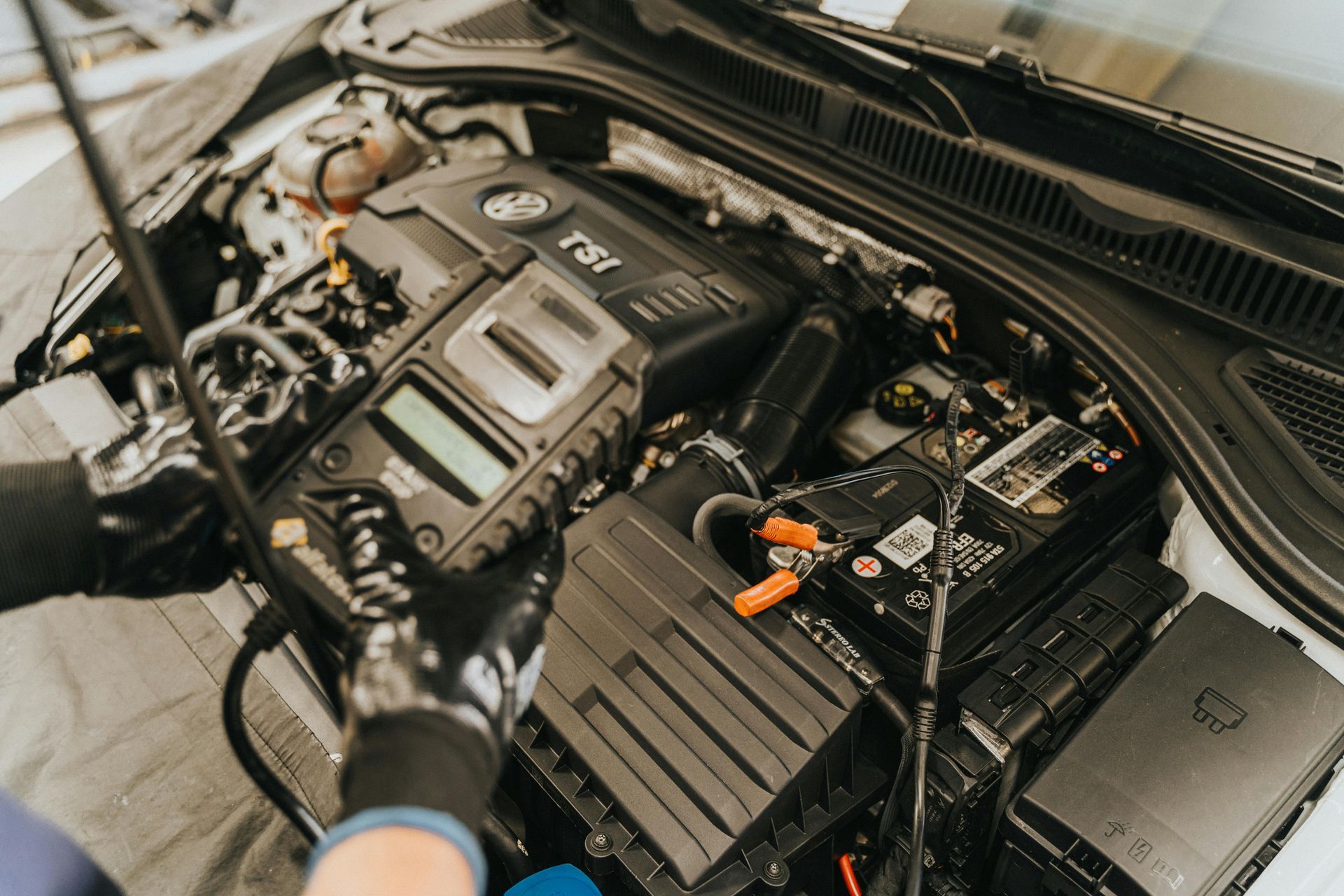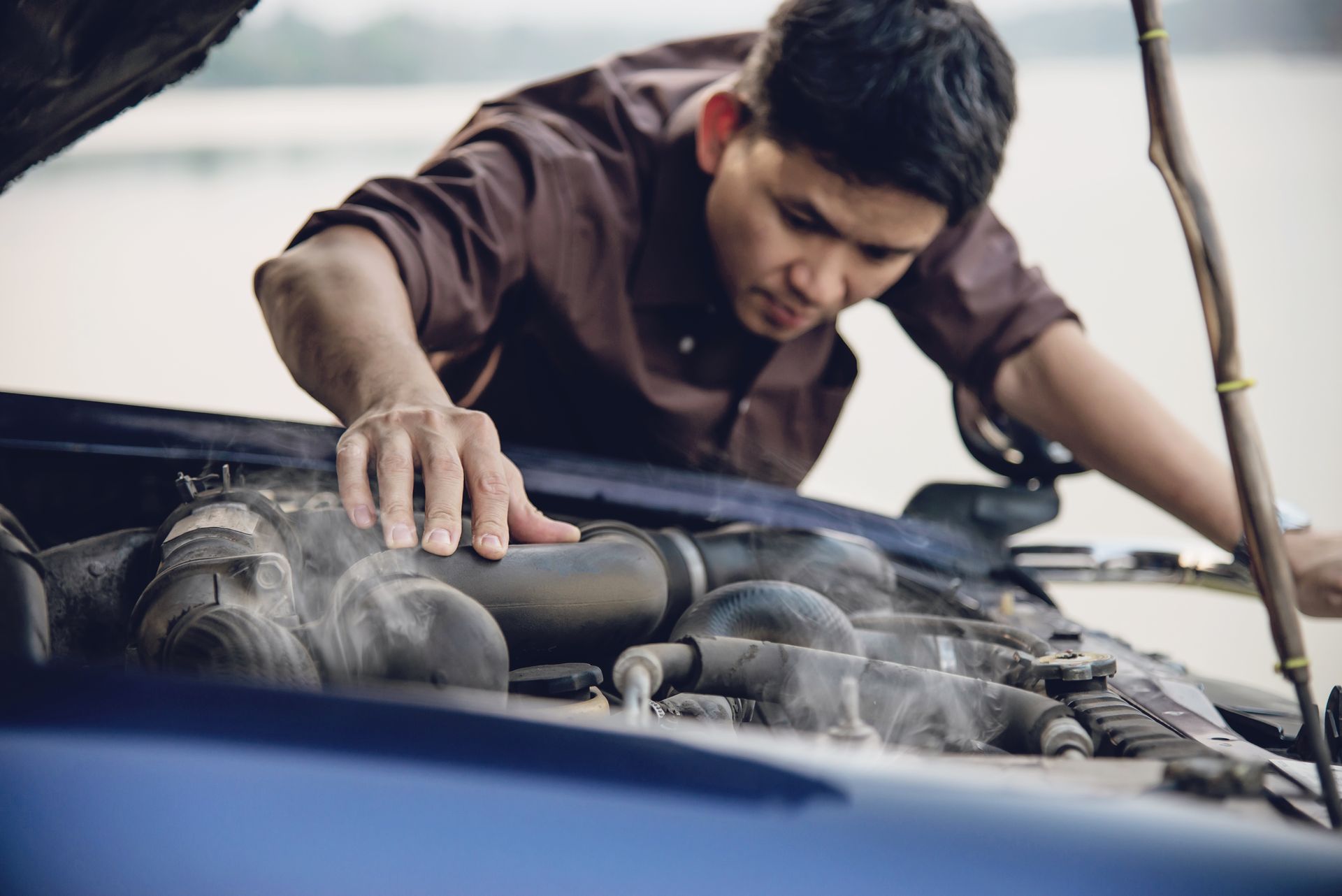Common Causes of Car Overheating and How to Prevent It
Car overheating is a common problem that many drivers face, especially during hot weather or long drives. When a car overheats, it can cause significant damage to the engine, leading to expensive repairs. At
Paul’s Transmission & Auto Repair in Baker City, OR, we specialize in auto repair services, including engine and transmission repair. Our experienced mechanics can help you understand why your car is overheating and how to prevent it from happening in the future. In this blog, we’ll discuss the most common causes of car overheating and provide tips on how to keep your engine running cool.
1. Low Coolant Levels or Coolant Leaks
One of the most common causes of car overheating is low coolant levels. Coolant (or antifreeze) is responsible for regulating the temperature of your engine by absorbing heat and dissipating it through the radiator. If your vehicle has a coolant leak, or if the coolant levels are low, the engine can’t stay cool, leading to overheating.
Coolant leaks can occur in various parts of the cooling system, including the radiator, hoses, water pump, or even the engine block itself. If you notice puddles of coolant under your car or a sweet smell inside the vehicle, it may indicate a leak.
How to Prevent It:
- Regularly check your coolant levels and top off as needed.
- Inspect the hoses, radiator, and water pump for any visible leaks.
- Schedule regular maintenance with a trusted mechanic, like Paul’s Transmission & Auto Repair, to catch potential issues early before they cause more significant problems.
2. Faulty Radiator or Clogged Radiator Fins
Your radiator plays a crucial role in keeping your engine cool by allowing heat to escape from the coolant. Over time, radiators can develop problems like clogging, corrosion, or damage to the fins, which reduces their ability to dissipate heat effectively. A malfunctioning radiator can quickly lead to overheating, especially in older vehicles or those that are used frequently in extreme conditions.
A clogged or damaged radiator won’t allow sufficient airflow, causing the coolant to overheat. This can happen due to debris, dirt, or rust accumulating inside the radiator over time.
How to Prevent It:
- Flush your radiator regularly as part of routine vehicle maintenance to prevent buildup inside.
- Ensure the radiator fins are free of debris and not bent or damaged.
- If your radiator is old or showing signs of corrosion, consider replacing it before it fails.
3. Broken or Malfunctioning Thermostat
The thermostat in your vehicle regulates the flow of coolant to the engine. When the engine is cold, the thermostat blocks coolant flow to help it warm up quickly. Once the engine reaches the appropriate temperature, the thermostat opens to allow coolant to flow through the engine, preventing it from overheating.
If the thermostat becomes stuck in the closed position, coolant cannot circulate properly, causing the engine to overheat rapidly. Similarly, a thermostat stuck in the open position can prevent your engine from reaching its optimal operating temperature, which also leads to performance issues.
How to Prevent It:
- Replace the thermostat as part of your vehicle’s regular maintenance schedule.
- Watch for warning signs such as fluctuating temperature readings on your dashboard or delayed engine warming.
- If you suspect your thermostat is malfunctioning, bring your car to a mechanic at Paul’s Transmission & Auto Repair for an inspection.
4. Water Pump Failure
The water pump keeps the coolant flowing between the engine and radiator. If the water pump fails, coolant won’t flow properly, and your engine will quickly overheat. A broken water pump may exhibit symptoms such as leaks, strange noises, or engine overheating despite adequate coolant levels.
Water pump failure is often caused by worn-out seals, bearings, or the pump itself. If left unchecked, it can lead to severe engine damage, including warped cylinder heads or blown head gaskets.
How to Prevent It:
- Have your water pump inspected regularly, especially if your vehicle is older or has high mileage.
- If your water pump shows signs of wear, have it replaced before it fails completely.
- Maintain your vehicle’s cooling system by flushing the coolant and replacing it at manufacturer-recommended intervals.
5. Fan and Belt Problems
Your car’s cooling fan plays a vital role in pulling air through the radiator to help cool the engine, especially when driving at low speeds or idling. If the cooling fan isn’t working properly due to electrical issues or a broken fan motor, your engine may overheat.
In addition to the cooling fan, belts in your engine compartment, such as the serpentine belt, are essential for driving the water pump and other components of the cooling system. If a belt breaks or becomes loose, it can prevent the water pump from circulating coolant effectively, causing overheating.
How to Prevent It:
- Regularly inspect your cooling fan for damage or electrical issues.
- Check your engine belts for signs of wear or tension problems and replace them if necessary.
- Have a mechanic at Paul’s Transmission & Auto Repair inspect your fan and belts during routine maintenance to ensure they are in good working condition.
Contact Paul’s Transmission & Auto Repair for Professional Auto Repair Services in Baker City, OR
At Paul’s Transmission & Auto Repair in Baker City, OR, we are committed to keeping your vehicle running smoothly and efficiently. Whether you’re experiencing car overheating or need general engine repair, our team of skilled mechanics can diagnose and fix the problem quickly and affordably. We offer a wide range of services, including transmission repair, engine repair, ignition repair, vehicle inspection, and much more.
If your car is overheating, don’t wait until the damage becomes irreversible. Contact Paul’s Transmission & Auto Repair today at
(541) 523-6923 to schedule an appointment. Let us help you get back on the road with confidence, knowing your vehicle is in top condition.
FAQs
What should I do if my car starts to overheat while driving?
If your car starts to overheat, pull over to a safe location and turn off the engine. Wait for the car to cool down before checking the coolant. If the coolant is low, add more if you have it on hand. Avoid driving the vehicle until it has been inspected by a mechanic to prevent further damage.
Can I drive with a broken thermostat?
It’s not recommended to drive with a broken thermostat. If the thermostat is stuck closed, your engine will quickly overheat. If it’s stuck open, your engine won’t reach optimal operating temperatures, leading to poor fuel efficiency and other performance issues.
How often should I replace my coolant?
Most manufacturers recommend replacing your coolant every 30,000 to 50,000 miles, depending on your vehicle and driving conditions. However, it’s always best to follow the guidelines in your vehicle’s owner’s manual or consult with a mechanic for advice specific to your car.
Can a clogged radiator cause engine damage?
Yes, a clogged radiator can lead to engine damage. When the radiator is clogged, it can’t dissipate heat properly, causing the engine to overheat. Overheating can result in warped cylinder heads, blown head gaskets, and other severe engine issues.
What are the signs of a failing water pump?
Signs of a failing water pump include coolant leaks, a whining noise coming from the engine, or the engine temperature gauge rising rapidly. If you notice any of these symptoms, it’s important to have the water pump inspected and replaced if necessary to avoid overheating and engine damage.












